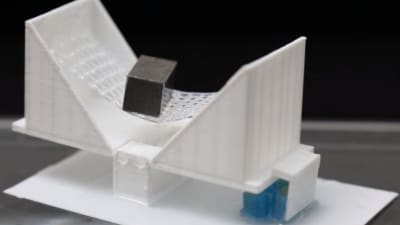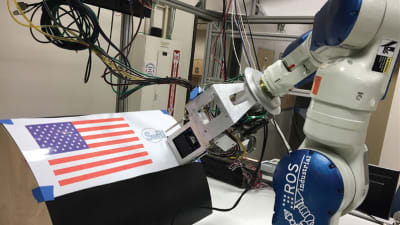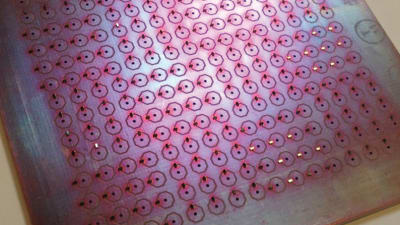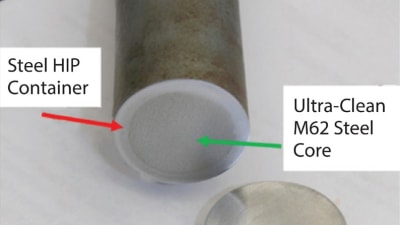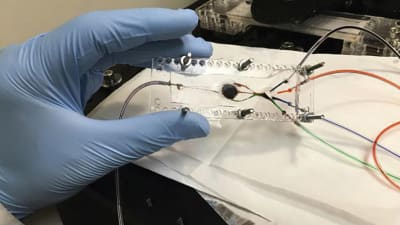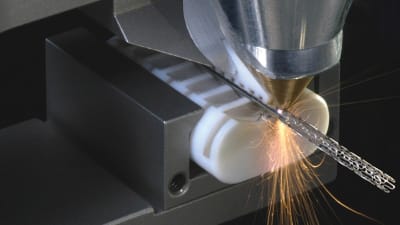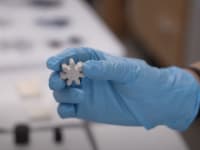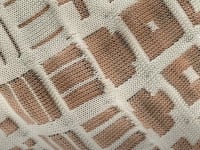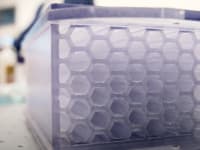Stories
38
61
0
1920
30
Products: Sensors/Data Acquisition
Nozzles
The Lee Company, Westbrook, CT, offers single- and multi-orifice lube nozzles in a variety of configurations. The nozzles may include HI-BAR® safety screens for additional protection that can be...
Blog: Materials
By adding nanopores to nickel, James Pikul and his team created a kind of "metallic wood."
Blog: Mechanical & Fluid Systems
Professor Jordan Raney spoke with Tech Briefs about what’s possible when you can embody 3D-printed objects with logic.
INSIDER: Materials
An ultrafast laser that fires pulses of light just 100 millionths of a nanosecond in duration could potentially revolutionize the way NASA technicians manufacture and...
INSIDER: Materials
Researchers from the University of Houston have devised a new machine learning algorithm that is efficient enough to run on a personal computer and predict the properties of more than...
INSIDER: Materials
Scientists from the Center for Functional Nanomaterials (CFN) — a U.S. Department of Energy (DOE) Office of Science User Facility at Brookhaven National Laboratory — have dramatically improved...
Briefs: Materials
3D printing allows for the efficient manufacture of complex geometries. A very promising method is direct laser writing in which a computer-controlled focused laser beam acts as a pen and produces the desired...
Briefs: Manufacturing & Prototyping
Painting of surfaces having numerous facets and/or curved surfaces is a time-consuming process that requires the application of several coats (layers) of paint. Such surfaces are often found on...
Briefs: Test & Measurement
Automated Fiber Placement (AFP) machines can be susceptible to tow-tape defects such as gaps and overlaps. These can reduce strength between 7% and 32%....
Briefs: Materials
Egyptian blue, derived from calcium copper silicate, was routinely used on ancient depictions of gods and royalty. Previous studies have shown that when Egyptian blue absorbs visible light, it then...
Briefs: Mechanical & Fluid Systems
NASA's Glenn Research Center developed a novel means of articulating the outboard portion of an aircraft wing to create the optimal geometry for given flight conditions. The Spanwise Adaptive Wing (SAW) concept employs a...
Briefs: Test & Measurement
Infrared motion detectors can cover only a limited amount of space, a person has to be within the detector's line of sight to be detected, and lights can go off when a person remains still...
Briefs: Materials
For many highly stressed engineering applications like bearings and gears, contaminated steel parts can lead to devastating outcomes such as an emergency shutdown or the end of a mission. Ensuring that these critical...
Briefs: Medical
A controllable material was developed that can transform into complex, pre-programmed shapes via light and temperature stimuli, allowing it to morph into a different shape before fully...
Briefs: Materials
New Material Composition Withstands Extreme Impact and Temperature
A super-strong alloy of copper and tantalum was created that can withstand extreme impact and temperature, providing high strength and good electrical conductivity. The alloy is a model system with structure that can be passed on to other alternative material systems. Materials...
Briefs: Manufacturing & Prototyping
Pulsed laser vaporization (PLV) production of single-wall carbon nanotubes (SWNTs) on traditional Co/Ni catalyst was explored with respect...
Briefs: Electronics & Computers
Composite Material Cools Itself Down Under Extreme Temperatures
A material, inspired by nature, can regulate its own temperature and could be used to treat burns and help space capsules withstand atmospheric forces. The research used a network of multiple microchannels with active flowing fluids (fluidics) as a method and proof-of-concept to...
Briefs: Photonics/Optics
A technique was developed that uses a specially adapted 3D printer to build therapeutic biomaterials from multiple materials. The advance could be a step toward on-demand printing of complex...
Briefs: Automotive
Innovators at NASA's Glenn Research Center have expanded their growing portfolio of aerogels to include a new optically transparent polyimide aerogel. Aerogels — low-density, highly porous, ultralight...
Briefs: Manufacturing & Prototyping
The ability of additive manufacturing to manage small volumes, create complex designs, and fabricate lightweight but strong structures makes it a natural fit for aerospace...
Briefs: Photonics/Optics
In biology, there are many examples where light induces movement or change — think of flowers and leaves turning toward sunlight. Magnetic elastomeric composites were developed that move in different ways...
Briefs: Electronics & Computers
A stainless steel alloy — alloy 709 — has potential for elevated-temperature applications such as nuclear reactor structures. It is exceptionally strong and resistant to damage when exposed to high...
Briefs: Mechanical & Fluid Systems
Innovators at NASA's Glenn Research Center have designed a superior seal assembly that is durable and highly dependable in extremely harsh environments. This...
Articles: Medical
Ultrashort pulse (USP) lasers for precision micromachining can minimize or avoid undesirable thermal effects that limit feature resolution, edge quality and, ultimately, product functionality. This is because...
Briefs: Test & Measurement
Engineers at Duke University have developed a way to extract a sequence of images from light scattered through a mostly opaque material — or even off a wall — from one long...
INSIDER: Materials
Imagine a world where cell phones and laptops can be charged in a matter of minutes instead of hours, rolled up and stored in your pocket, or dropped without sustaining any damage. It is possible, but the...
INSIDER: Transportation
Fuel cells generate electricity directly from hydrogen and oxygen and produce only water vapor as emissions. But most fuel cells are too expensive, inefficient,...
Articles: Software
With the computational power and software available today, numerical simulation is a real option to quickly get answers to complicated technical, scientific, and engineering questions. Not only has the hardware doubled...
Briefs: Imaging
Active Pointing Monitor for a 2-Axis Optical Control System
NASA Goddard Space Flight Center has developed a pointing measurement detection and control system that monitors the real-time optical axis motions (such as tip and tilt) that affect image quality in aerial platforms. To date, there is no known real-time optical image alignment and control...
Top Stories
Blog: Manufacturing & Prototyping
2025 Holiday Gift Guide for Engineers: Tech, Tools, and Gadgets
Blog: Power
Using Street Lamps as EV Chargers
INSIDER: Semiconductors & ICs
Scientists Create Superconducting Semiconductor Material
Blog: Materials
This Paint Can Cool Buildings Without Energy Input
Blog: Software
Quiz: Power
Webcasts
 Upcoming Webinars: AR/AI
Upcoming Webinars: AR/AI
The Real Impact of AR and AI in the Industrial Equipment Industry
 Upcoming Webinars: Motion Control
Upcoming Webinars: Motion Control
Next-Generation Linear and Rotary Stages: When Ultra Precision...
 Podcasts: Manufacturing & Prototyping
Podcasts: Manufacturing & Prototyping
SAE Automotive Engineering Podcast: Additive Manufacturing
 Podcasts: Defense
Podcasts: Defense
A New Approach to Manufacturing Machine Connectivity for the Air Force
 On-Demand Webinars: Manufacturing & Prototyping
On-Demand Webinars: Manufacturing & Prototyping
Streamlining Manufacturing with Integrated Digital Planning and Simulation




